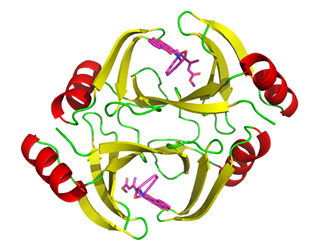About half of all drugs, ranging from morphine to penicillin, come from compounds that are from—or have been derived from—nature. This includes many cancer drugs, which are toxic enough to kill cancer cells. So how do the organisms that make these toxic substances protect themselves from the harmful effects? A team of researchers led by scientists from the Florida campus of The Scripps Research Institute in collaboration with Argonne researchers from the Midwest Center for Structural Genomics used extreme-brightness synchrotron x-rays from the U.S. Department of Energy’s Advanced Photon Source to uncover a previously unknown mechanism—proteins that cells use to bind to a toxic substance and sequester it from the rest of the organism. The work has important implications for understanding how human cancer cells develop resistance to natural, product-based chemotherapies. Furthermore, the microbiome may play a role in drug resistance. The study was published in the journal Cell Chemical Biology.

